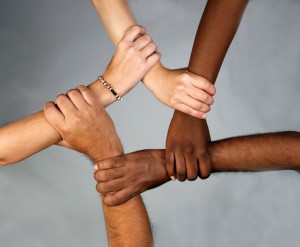What is Group Dynamics?
 If you are a speaker or group leader who struggles with getting your points across to your audience, you might be surprised to learn that the struggle is natural because of something called Group Dynamics.
If you are a speaker or group leader who struggles with getting your points across to your audience, you might be surprised to learn that the struggle is natural because of something called Group Dynamics.
The encyclopedia defines the concept as a behavior system or pattern that develops in groups. Imagine yourself teaching a health class to a group of junior-high students. When you get to the reproduction chapter some of the kids snicker and crack jokes. Others stare at you with the deer-in-the-headlight syndrome and still others speak up and contribute their limited knowledge to the discussion, thoroughly confusing the class. What is going on?
The Theory has been Extensively Studied
What is going on is a series of predictable patterns that can derail any group interaction. For a long time people thought of behavior in groups as “linear.” In an orchestra, the leader stands on the riser and lifts his baton. The orchestra immediately readies their instruments to play. In other words, they have a similar response to the teacher. Sage pub.com points out that scientists have discovered groups react in a circular pattern instead. A biologist named Ludwig von Bertclanffy introduced the concept of holism in the 1960s asserting that it pertained to many systems, including groups.
Group Dynamics is a common course taught to students earning a degree in human resources, as valuable skills that carry over to workplaces of all types are learned.
Top 25 Best Affordable Bachelor’s in Human Resources Degree Programs
What Kinds of Principles Are at Work
So, what exactly are the principles at work? Science hasw learned that group behavior is a result of the reactions of all its members. That is what is meant by holism. For one thing, all groups organize themselves into smaller groups. There is a popular table in the lunchroom that excludes everyone but a select group. In the class, two or three kids who have similar personalities can form an alliance. These alliances can be distracting when they compete for attention or dominance with the teacher.
Another principle is “group think.” Remember the old movie “Twelve Angry Men?” In that film, jury members ignored what they knew was the “right” decision to comply with the group’s wishes. The resulting “hung jury” provided the conflict for the plot. That is group thought, and it results in the loss of a lot of innovative and interesting ideas because group members are reluctant to express thoughts that are contrary to the group consensus. The holism concept shows that the reactions of group members are affected by the actions of the rest. The jury members in the film became angry when they interpreted someone’s sniffle as ridicule. They, in turn, talked louder and dominated the deliberation which led to many members “clamming up” so that they wouldn’t be seen as disagreeing.
It Can Affect Many Interactions
These examples of group principles are just a glimpse of the concept. If you are a group leader, a teacher or a member of a problem-solving team at work, you can be more successful by knowing how to work with the group. When you encounter problems, tackle them immediately. Define the roles of individual group members and set goals. Pay attention to the group interactions. By becoming an expert in group dynamics, you will learn that there are steps that can be taken in any group situation to ease the process of goal accomplishment.